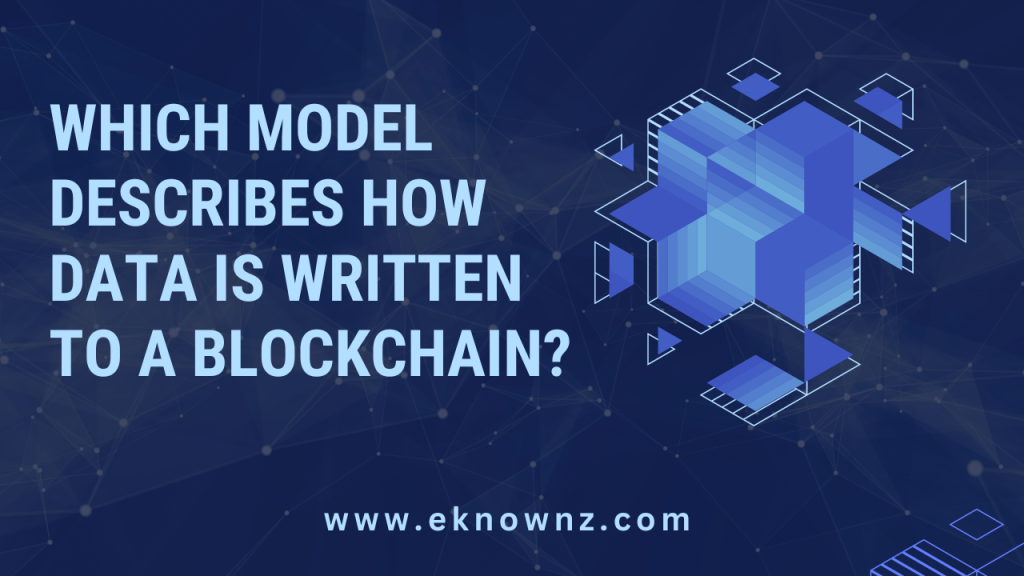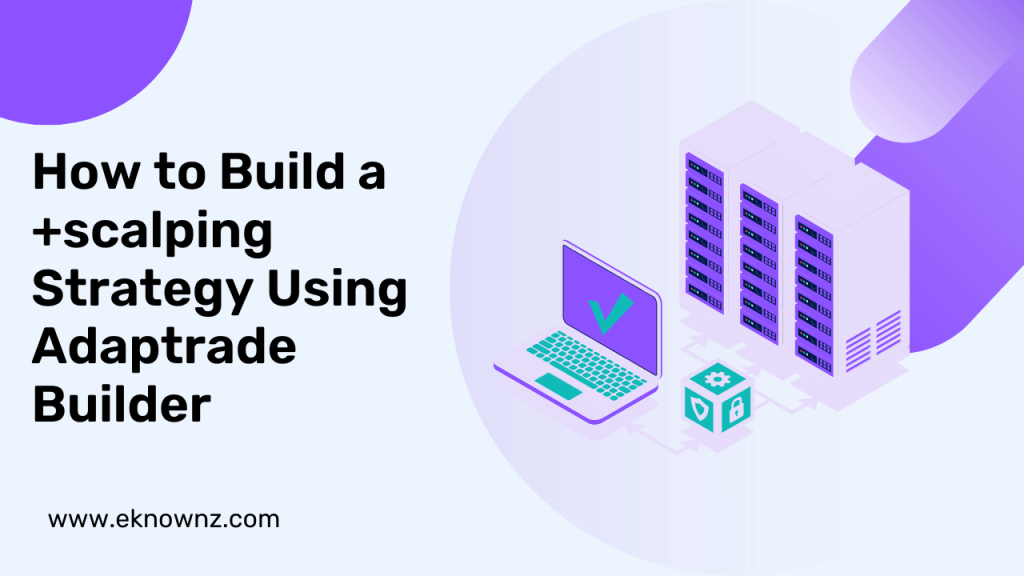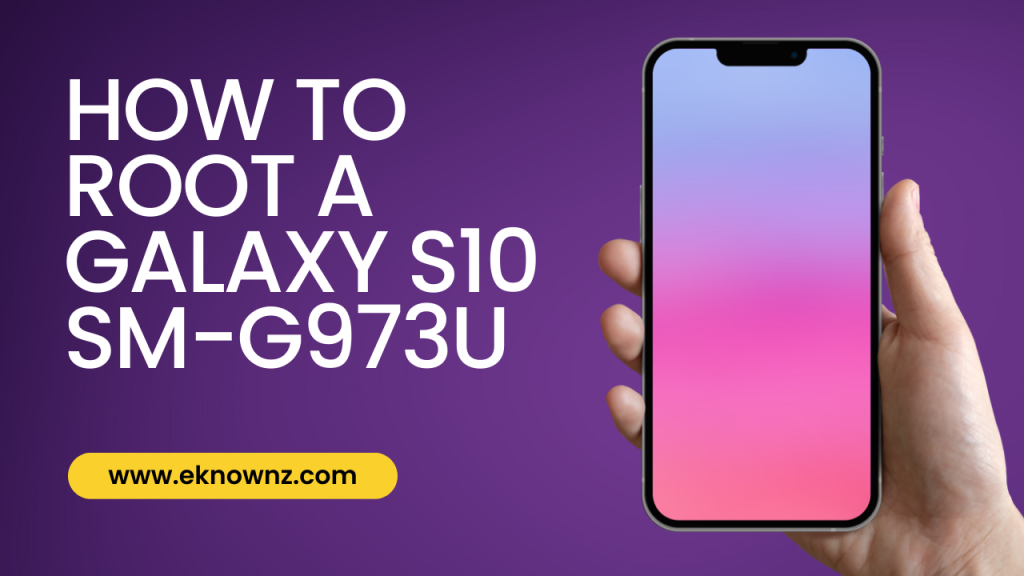Boldly stepping into the new era of technology, it’s high time we familiarize ourselves with the mechanisms that underpin the world of blockchain. Today, we will delve into one of the most frequently asked questions “Which Model Describes How Data is Written to a Blockchain?”.
As a piece of technology that is revolutionizing industries, understanding the inner workings of a blockchain is crucial. Let’s unpack this together.
Understanding Blockchain: The Basics
Blockchain technology is much like a digital ledger, storing transactions in an immutable and decentralized manner. It utilizes a peer-to-peer network where every participant or ‘node’ has access to the entire blockchain. A block, once written onto the blockchain, is near impossible to alter or delete, ensuring the highest levels of data integrity and security.
The Model Behind Writing Data to a Blockchain
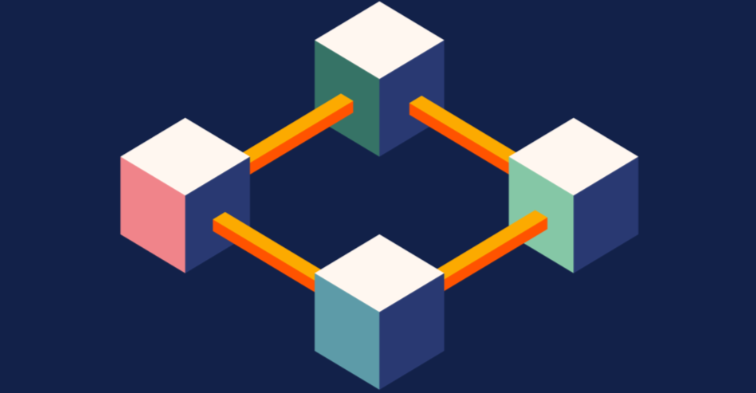
One of the pillars of blockchain technology is the blockchain data storage model. It is an append-only structure wherein data is added to the blockchain in the form of new blocks. Each block contains a list of transactions, a timestamp, and a reference to the previous block.
A robust data validation protocol ensures that the transactions are legitimate before they are recorded. The participants or ‘nodes’ reach a consensus using specific consensus algorithms, confirming the validity of the transactions.
The Magic of Blockchain Data Transaction Process

Let’s illuminate the magic of the blockchain data transaction process. A transaction is first created and then broadcasted to the network. The nodes validate the transaction using cryptographic algorithms. Once verified, the transaction is added to a block, which then enters the blockchain data recording mechanism.
The Immovable Pillar: Blockchain Data Immutability Model
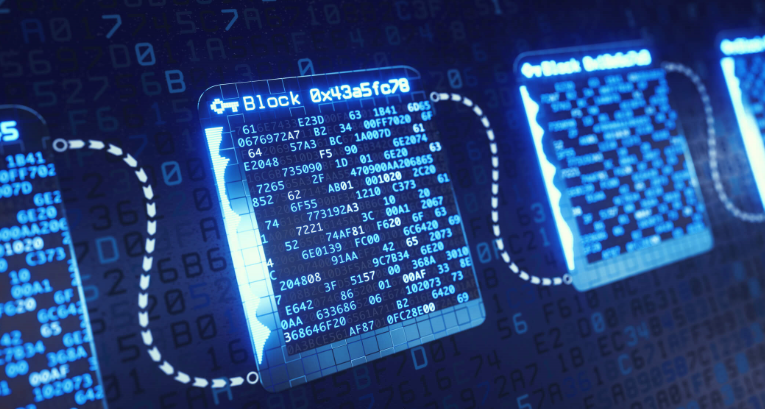
The blockchain data immutability model stands as a formidable pillar, ensuring that once data is written, it cannot be changed or tampered with. This model brings trust into the system, making it a boon for industries that require high data integrity.
How is Data Validated Before Being Written to a Blockchain?
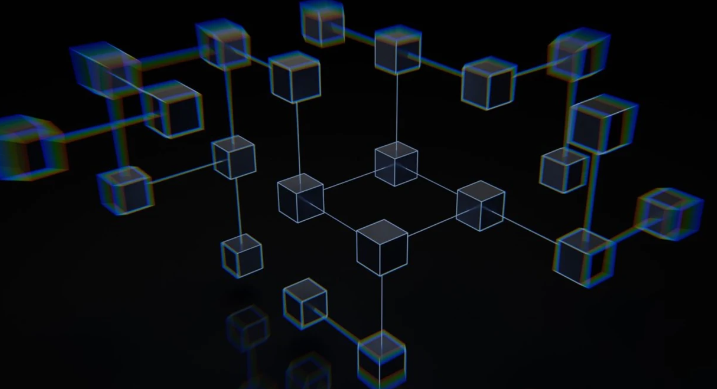
The blockchain data validation protocol plays a crucial role here. The protocol, using cryptographic methods, checks the transaction’s integrity, its input-output balance, and if the transaction isn’t double-spent. Upon validation, it gets a green signal to be written to a block.
How is Blockchain Data Synchronized Across Multiple Nodes?
The blockchain data synchronization protocol makes sure all nodes in the network have the same version of the blockchain. It’s achieved through the distribution and replication of data. Each node, upon receiving a new block, checks its validity and then adds it to their version of the blockchain.
Making Sense of the Blockchain Data Distribution Mechanism
The blockchain data distribution mechanism ensures every node receives every validated transaction. When a block is added to the blockchain, it’s broadcasted to the entire network. Each node then updates its copy of the blockchain, ensuring data consistency across the network.
The Role of Timestamps in Writing Data to a Blockchain
Timestamps in a blockchain provide a precise date and time for each transaction. The blockchain data timestamping protocol allows for better transparency and accountability, making it a vital part of blockchain technology.
Remember, the key to success in blockchain is continuous learning. Let’s venture on this path of knowledge together, unlocking new potentials, solving complex problems, and building a future where technology acts as a tool for progress and prosperity.
Blockchain Data Consensus Algorithm: The Heartbeat of Blockchain
The integrity and reliability of data in blockchain technology hinge upon the blockchain data consensus algorithm. It’s a protocol through which all nodes in the network agree on the content of data to be written onto the blockchain.
In a decentralized network, achieving consensus is no small feat. In the case of the blockchain, nodes validate transactions and propose new blocks to be added to the chain. The nodes then engage in a consensus process to ensure that the block meets the network’s criteria. This crucial step mitigates the risk of fraud or double spending, ensuring that only verified transactions make it into the blockchain.
The most commonly used consensus algorithms are Proof of Work (PoW) and Proof of Stake (PoS), with several others, like Delegated Proof of Stake (DPoS), Practical Byzantine Fault Tolerance (PBFT), and more, gaining popularity.
Ensuring Security: Blockchain Data Encryption Process
The blockchain data encryption process provides an extra layer of security. Transactions are encrypted using cryptography before they’re broadcasted to the network, protecting the data from prying eyes and potential threats.
Every participant in the blockchain network has a pair of cryptographic keys – a private key to sign their transactions, and a public key that others can use to verify those signatures. This concept is known as Public Key Infrastructure (PKI), and it forms the basis of trust within a blockchain network. The encryption and decryption processes using these keys ensure that the data remains secure, reliable, and tamper-proof.
Blockchain Data Provenance Model: Tracking Data Origin and History
The blockchain data provenance model offers a reliable way to track the origin and history of data. Each block in a blockchain contains information about where and when the data was created, and the chain of blocks ensures the data’s history can be traced back to its source.
Provenance in a blockchain context not only increases transparency but also strengthens data integrity and security. This model is particularly useful in industries like supply chain management, where tracking the history of goods from source to destination is crucial.
Blockchain Data Replication Process: Distributing Trust
The blockchain data replication process works in tandem with the data distribution mechanism. It helps maintain an updated and identical copy of the blockchain across all nodes in the network, thus creating a decentralized network of trust.
When a new block is validated and added to the blockchain, this information is broadcasted across the network. Each node updates its version of the blockchain with this new block, ensuring that every participant has the same information. This decentralization adds another layer of security, as altering data would require the majority of the network to be compromised.
Exploring Further: Advanced Models and Use-Cases
Blockchain technology isn’t static. As we venture further into this domain, new models are emerging that offer innovative ways to store, validate, and distribute data. Advanced consensus mechanisms like Sharding and Layer-2 solutions promise to address scalability issues, while privacy-focused models introduce zero-knowledge proofs to enhance data privacy.
Moreover, the application of blockchain extends beyond cryptocurrencies. Industries such as healthcare, supply chain, finance, and more are exploring ways to leverage blockchain to ensure data integrity, provenance, and security.
Also Read: What Describes the Relationship Between Edge Computing and Cloud Computing?
Conclusion: The Unfolding Potential of Blockchain
We hope this guide about “Which Model Describes How Data is Written to a Blockchain?” will prove much beneficial for all our readers. Exploring how data is written to a blockchain opens doors to understanding the true potential of this groundbreaking technology. Blockchain’s data storage, validation, distribution, and replication models together create a system of unparalleled security, transparency, and trust.
Understanding these mechanisms and their applications is not just for tech enthusiasts or industry professionals – it’s for anyone who believes in the transformative power of technology. After all, blockchain is not just about data. It’s about how we, as a global society, can share, verify, and preserve information in a manner that is secure, transparent, and democratic.
So, let’s continue our blockchain journey, fostering a better understanding of this technology. Let’s leverage its potential, solving problems, and creating solutions for a future where trust is distributed, and data speaks truth.

Abby Raglin: An accomplished blogger and captivating writer, Abby weaves words into tapestries of inspiration. With her insightful musings and captivating storytelling, she takes readers on unforgettable journeys. Unleash your imagination and join Abby’s literary adventures, where words come alive on every page.

